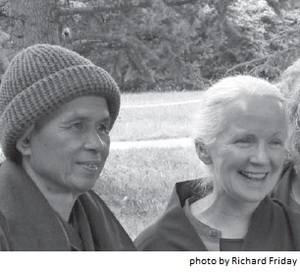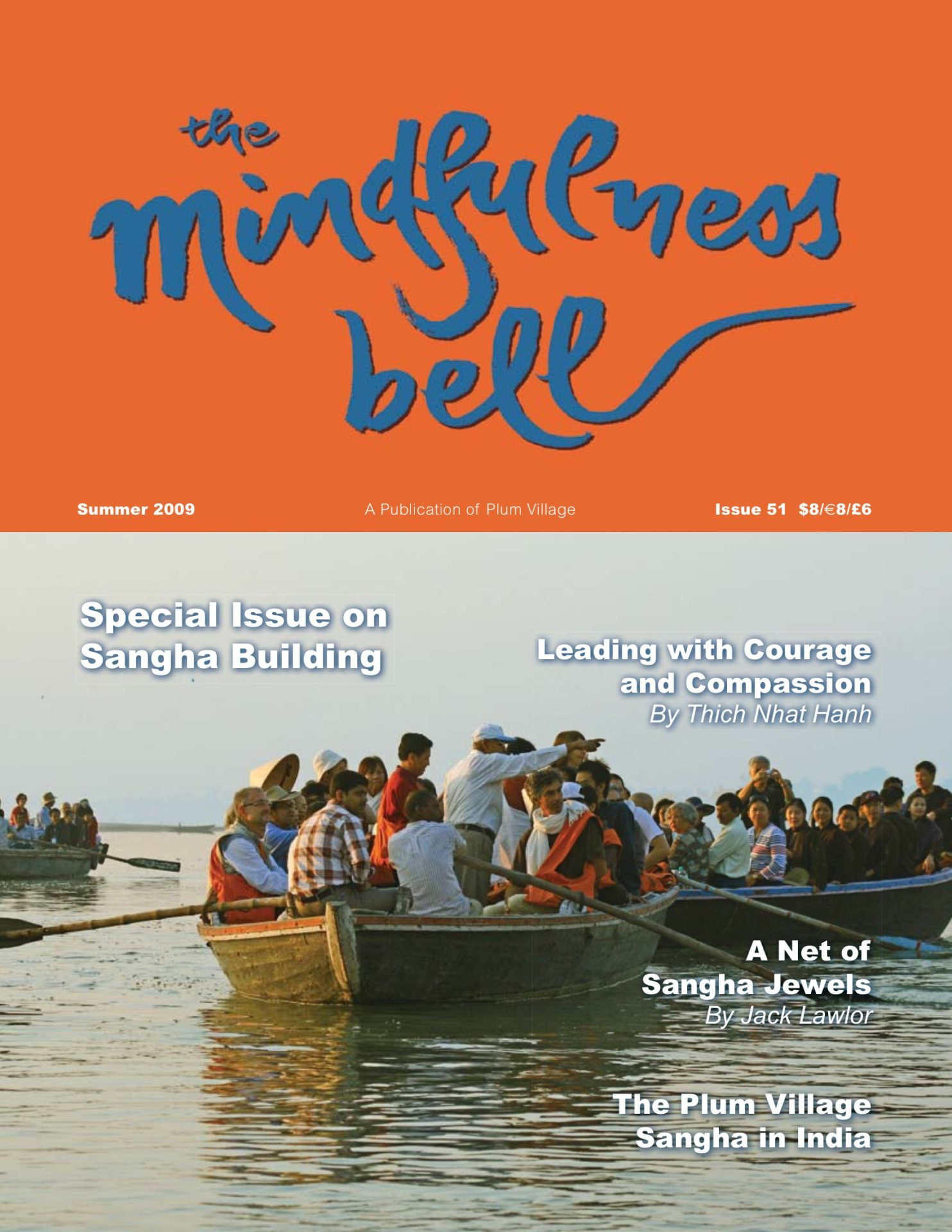A Lesson in Love
By Joanne Friday
Our practice is about expanding our capacity for love and compassion. We use the practice to transform our unskillful states of mind and develop fearlessness so we can go through the world loving freely with an open heart.
In my experience, this is the basis of Sangha building. It is a very deep practice of expanding our capacity to love.
A Lesson in Love
By Joanne Friday
Our practice is about expanding our capacity for love and compassion. We use the practice to transform our unskillful states of mind and develop fearlessness so we can go through the world loving freely with an open heart.
In my experience, this is the basis of Sangha building. It is a very deep practice of expanding our capacity to love. The Sangha, committed to practicing the Five Mindfulness Trainings, ideally provides a safe container in which we can water the wholesome seeds in ourselves and each other. It is a community with which we can practice deep listening and mindful speech and share our aspirations, our joys and concerns, and support each other in our practice.

It also gives us opportunities to be more aware of the unwholesome seeds in us and to use all of our practices so that we can transform them. We can observe our habits of mind and our attachment to views. Because our Sanghas are open to everyone, we come in contact with some people who are difficult for us. We can feel our hearts close. It requires that we invoke Sadaparibhuta Bodhisattva, whom I see as a sort of patron saint of Sangha building. S/he is the bodhisattva of deep respect who sees the Buddha nature in everyone. We need to be able to do that for each one of our brothers and sisters. When we find our heart closing, we can look at what arises in us regarding the person we find to be difficult. We embrace those difficult feelings, look deeply in order to understand, and with understanding, we arrive at compassion and love for ourselves and the one we thought to be “difficult.” Then our heart can open again.
The Sangha gives us many opportunities to put into practice the teachings of the Discourses. We might use the Discourse on the Five Ways of Putting an End to Anger. If a person’s actions are not kind, we focus on their words. If their words are not kind, we focus on their actions, and so on.
In the Sangha, we have a responsibility to resolve all conflicts however small in a safe way. We can touch those things, like conflict, that scare us, and develop skillful means to transform them. This enables us to become more fearless and more honest with ourselves and each other about conflicts when they arise. Once again, we can allow our hearts to open instead of to harden and close.
These are just a few examples of the transformative power of Sangha building. If we want to build a healthy and happy Sangha, we need to discover and transform the barriers to love in our own hearts, so we can truly love every one of our brothers and sisters. We are so blessed to have a practice to help us to be truly joyfully together.

Joanne Friday, True Joy of Giving, practices with the Clear Heart Sangha, the Radiant Bell Sangha, and the Mind Tamers Sangha in Rhode Island.

